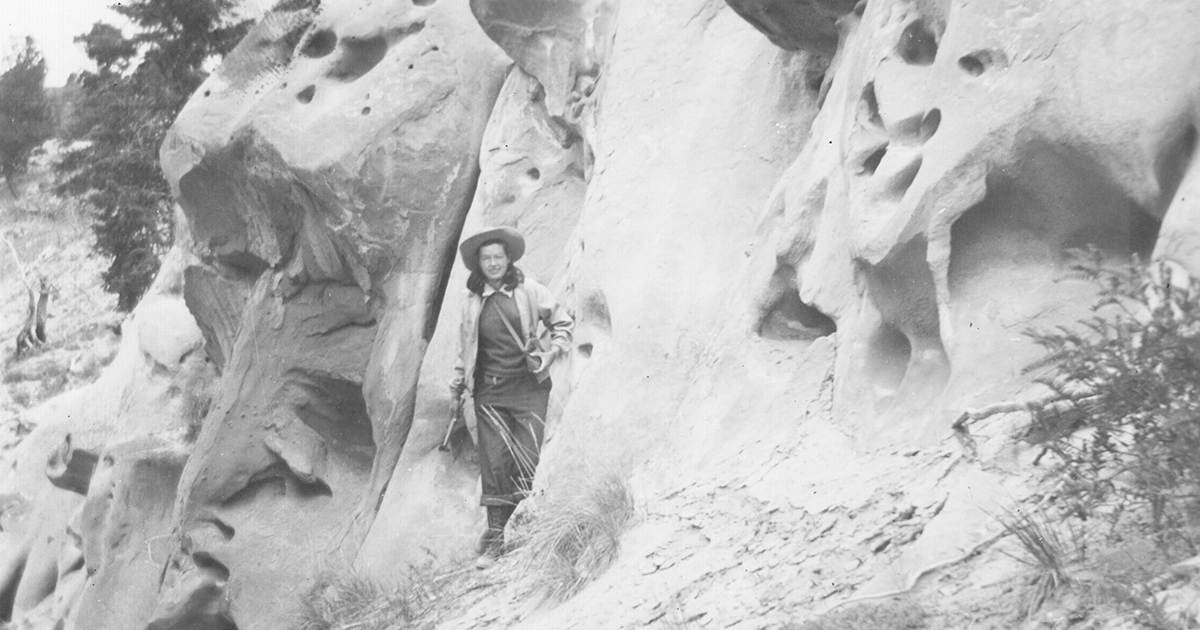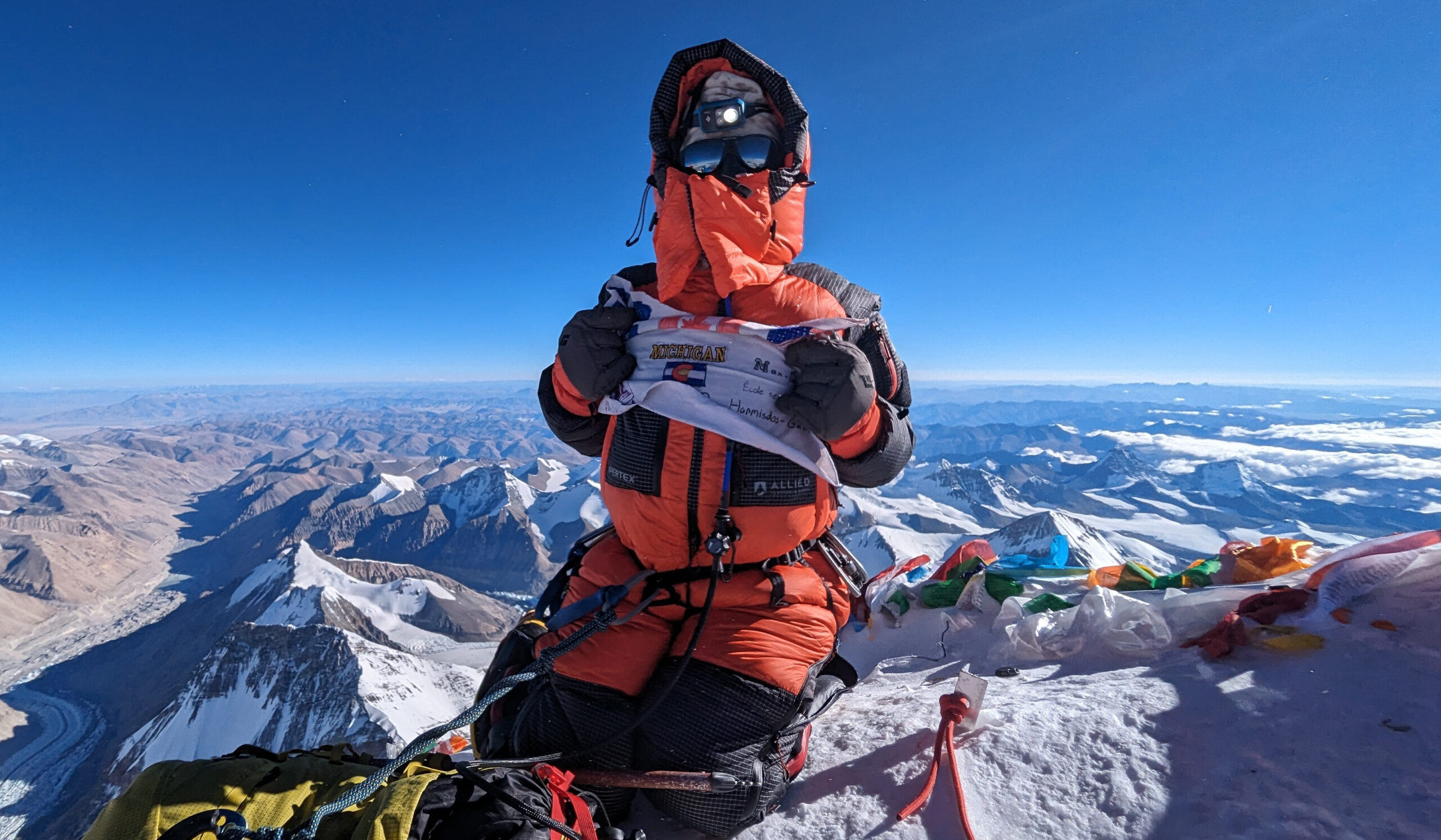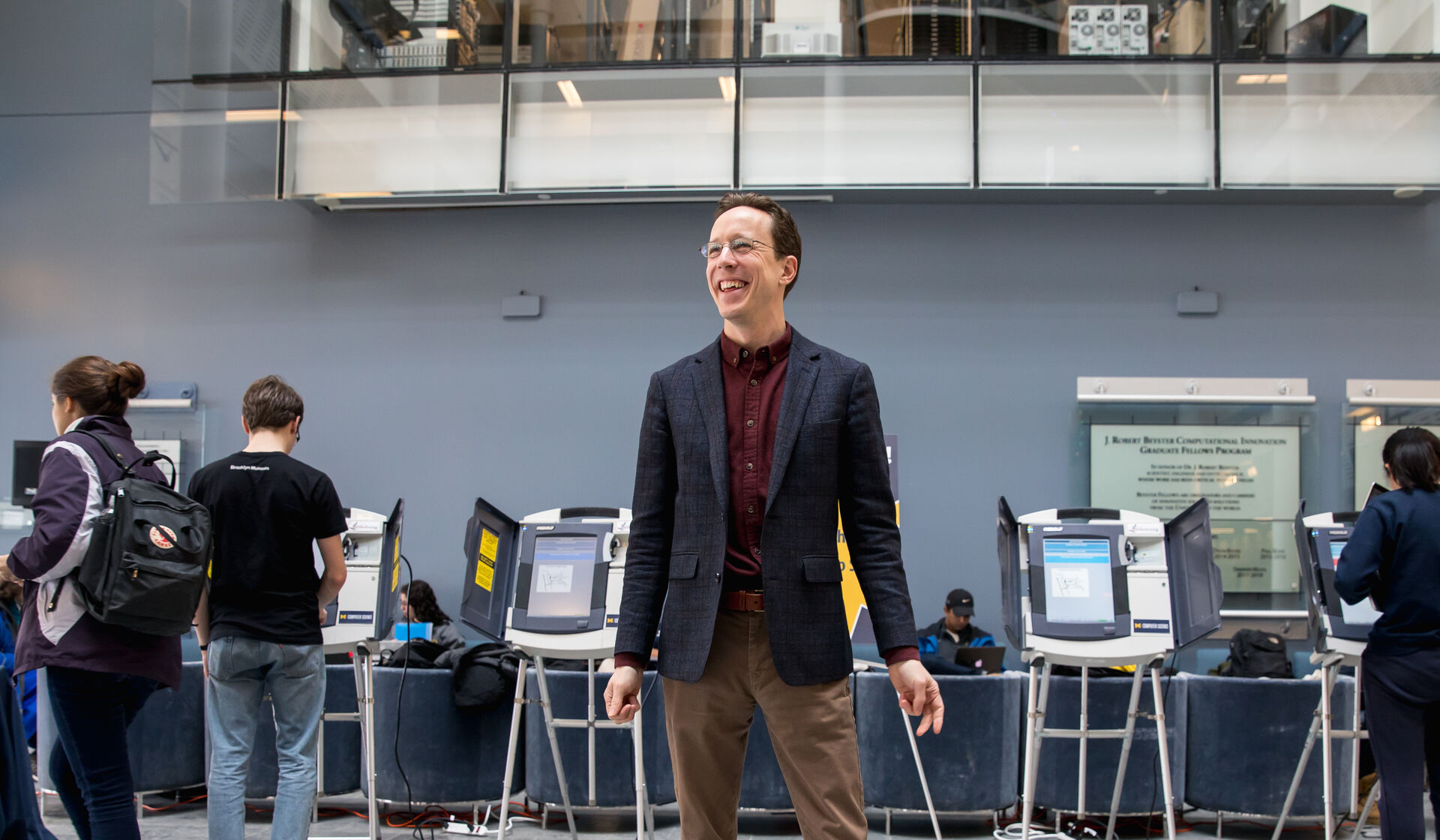Every summer since 1929, U-M students have headed west to Camp Davis Rocky Mountain Field Station in Wyoming, where they study natural landscapes surrounded by majestic mountains. The camp gives students, including non-science majors, the opportunity to spend the summer in a beautiful environment, studying various flora, fauna, and geological foundations.
John Geissman, ’73, MS’76, PhD’80, now a professor of geoscience at the University of Texas at Dallas, has attended Camp Davis nearly every year since 1973, first as an undergraduate student, then as a teacher’s assistant, and now as an adjunct full professor at the camp. “There’s a likelihood that it’s a once-in-a-lifetime experience,” Geissman says of the camp, which began as a place for engineering students to learn surveying activities and now accommodates geology students studying land formations. “It gives students a far better perception of the importance of the natural world.”
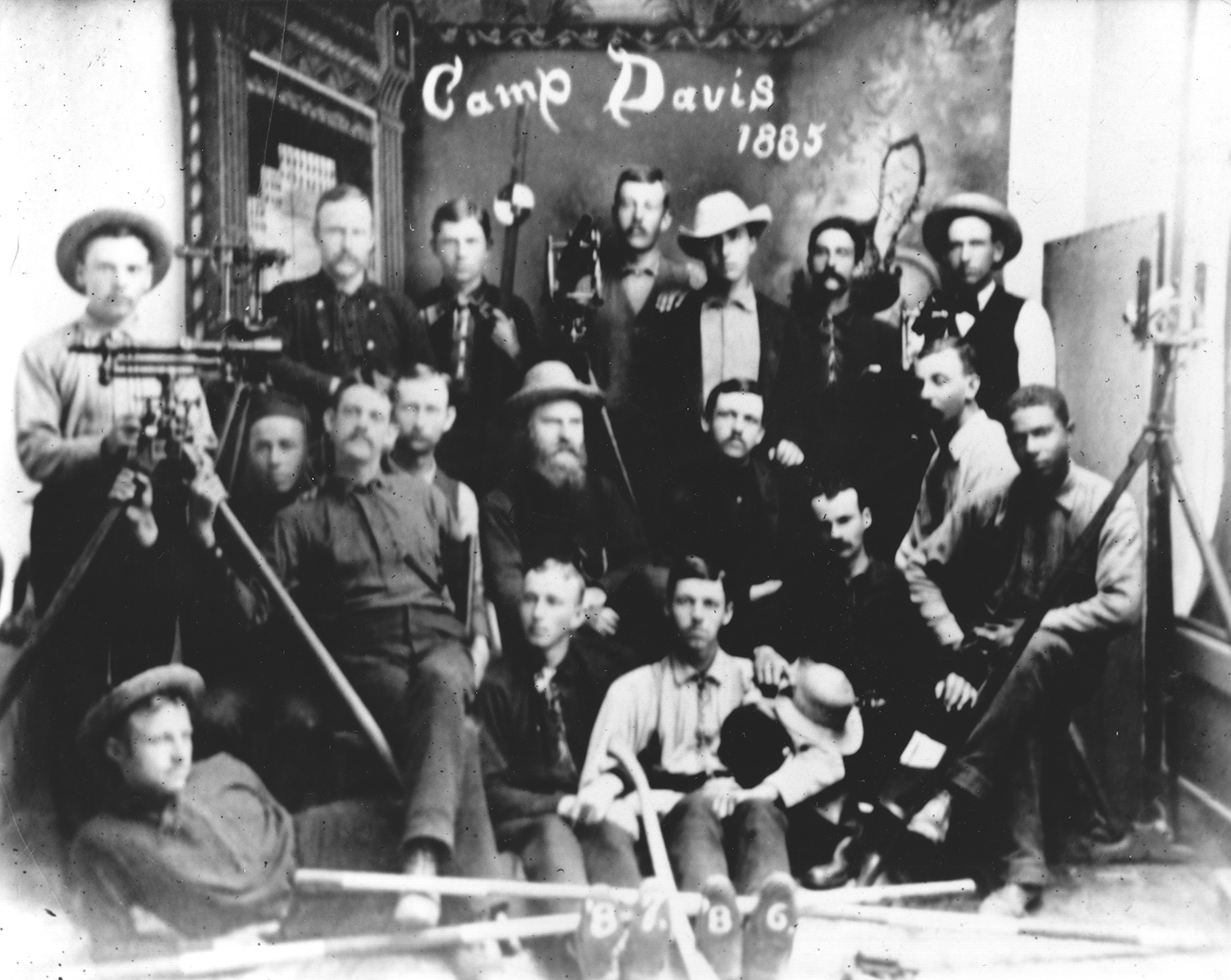
Founded in 1874 by Joseph Davis, a U-M civil engineering professor, the first Camp Davis was located in Whitmore Lake, Michigan, and was created to provide engineering students with an opportunity to learn about surveying the earth’s physical structure. For the next several years, it moved from place to place within the state, always near open water since land surveying requires an unobscured vision for long distances.
According to the paper, “The History of Summer Surveying Camp at the University of Michigan,” by the late civil and engineering professor Eugene Glysson, MS’51, during the 1880s three large tents were erected every summer at the roving camp. Each sheltered 10 students, with the furnishings consisting only of a sheet metal stove in the middle of the dirt floor and a pile of straw and blankets for beds. Female students were not allowed to attend.
From 1909 to 1928, Camp Davis lived at Douglas Lake in northern Michigan, where U-M’s Biological Station had just been established. Operated by the engineering department, the staff eventually abandoned the residence tents and built steel buildings, a mess hall, and a sanitary system. Those amenities came in handy during World War I, when students received military training at the camp, including trench digging and fortification construction.
On June 26, 1919, The Michigan Daily declared, “WOMAN TO ATTEND CAMP DAVIS,” and noted an unnamed female among the cohort of 70 heading to the camp, making her “the first and only woman who has ever enrolled to take the summer work in higher surveying.”
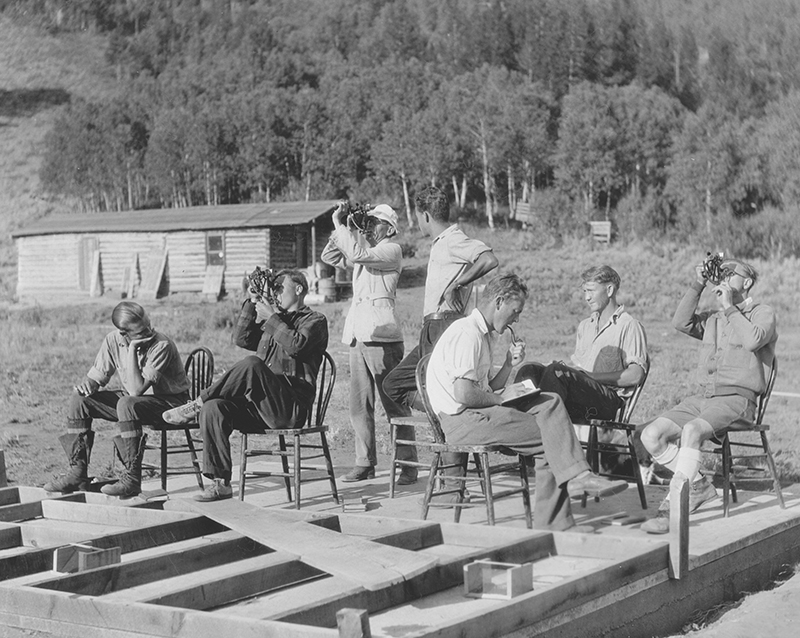
By 1929, between the growth of the Biological Station and problems surveying land in a dense forest location, Camp Davis decided to move west. A group of engineering professors, aided by Wyoming-based U-M alumni, eventually bought a 120-acre abandoned ranch in Hoback Valley, Wyoming, 20 minutes from the town of Jackson.
That first summer, a number of staff and students drove the 1,800-mile distance from Ann Arbor to the new camp, carrying needed equipment. Upon their arrival, they began building facilities. By the end of the summer, they had completed 14 residence buildings, a shop, an instrument room, and a caretaker’s residence. In 1933, geography students were the first non-engineering students to study at Camp Davis. The following year, The Michigan Daily received news reports about the camp’s activities over airways for the first time through radiogram dispatches.
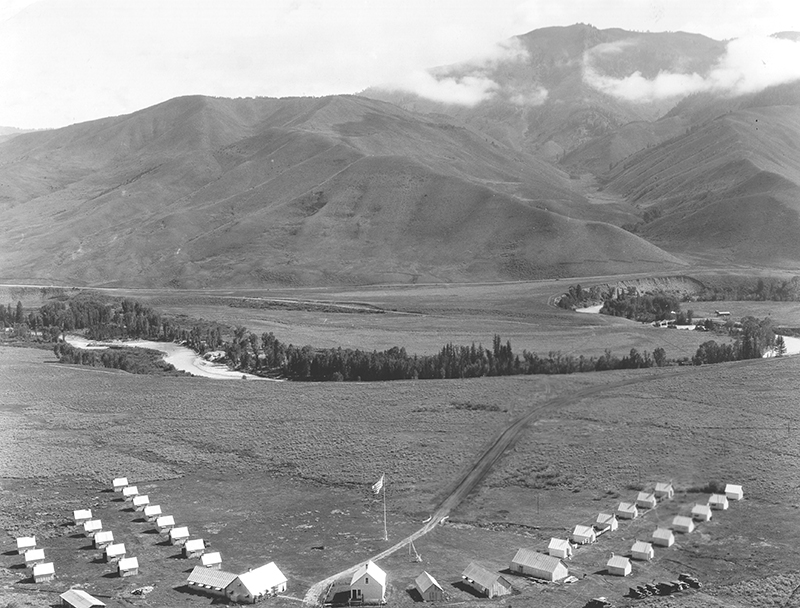
In 1937, senior engineering student Mary Bastian, ’37, became the first woman to attend the Wyoming camp, allowing other women to join the next year when the geology department first arrived at Camp Davis. Soon after, women’s bath and toilet facilities were constructed. With World War II necessitating more women in the petroleum industry, the University offered a 12-month course in petroleum geology, including fieldwork at Camp Davis. By 1943, 75% of the Camp Davis students were women.
The geologists left Wyoming in 1952, performing fieldwork in Boulder, Colorado, from 1953 to 1964. And when the civil engineering department eliminated summer fieldwork as a degree requirement in 1964, U-M’s Department of Earth and Environment Studies assumed control of the camp the following year. Geissman could not be happier that the department has managed the camp ever since, as it is “a splendid location for the opportunity to witness and explore so many different natural phenomena.”
Today, Camp Davis consists of heated cabins with full bathrooms and Wi-Fi, a stark difference from the experience of past students, who contacted friends and family by mail or the camp’s one phone booth.
Heather Foote, ’89, who attended Camp Davis in 1986, says, “Camp Davis cemented my lifelong love of mountains and natural beauty.” Adds Geissman, “The proximity to the Tetons, Yellowstone, you name it,” he says. “There are so many different things within a half-day’s drive. It seems pretty phenomenal in my opinion.”
Jeff Burtka, ’97, is a freelance writer based in metro Detroit. You can read more of his work at jburtka.journoportfolio.com.

